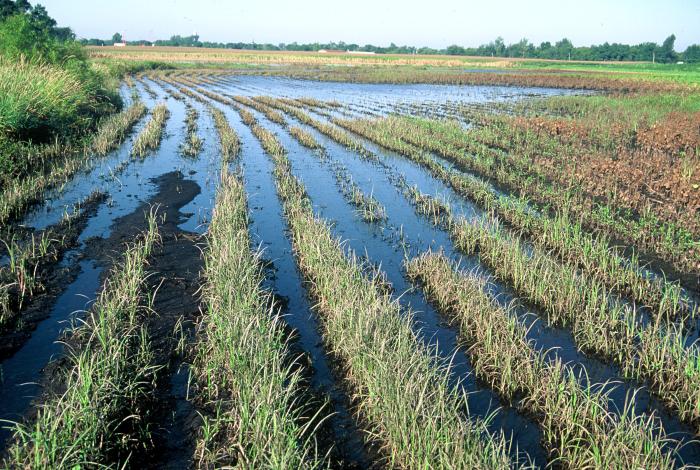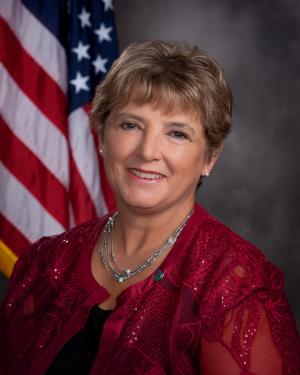Conserving Small Wetlands on Working Cropland
Conservation, Wildlife and Ag Groups Team Up to Conserve Small Wetlands on Working Cropland
News Release from NRCS-North Dakota – Oct. 27, 2020

There’s a new option for managing small, temporary wetlands on working cropland in the Prairie Pothole region, thanks to a collaboration between conservation, wildlife and agriculture groups and agencies.
It’s called the Prairie Pothole Water Quality and Wildlife Program. Administered by the USDA Natural Resources Conservation Service, it allows farmers to continue farming temporary wetlands and compensates them for maintaining the basins’ ability to hold water.
Many are calling the program a “win-win.”
“I believe it is a game changer for how agriculture and wildlife can work together on cropland acres,” says Mary Podoll, NRCS state conservationist in North Dakota.
Win for farmers

Mary Podoll, North NRCS state conservationist, says a new wetland program is a “game changer.”
The program is a win for farmers because compensates them for voluntarily conserving wetlands on working lands, says Jim Teigen, a Rugby, N.D., grain grower enrolled in the program. He is a former state director of the North Dakota Farmers Union and was on the task force that developed the program.
The program is easy to understand, Teigen says. You get paid every year whether the pothole is wet or dry, whether you can plant the basin or have to go around it. In years when a crop can be planted and harvest on the wetland, you still get compensated. The payment is for maintaining the wetland’s ability to hold water.
With extra conservation revenue, small wetlands can become the most profitable acres on the farm, he says.
Win for conservation, waterfowl
The program is a win for conservation and wildlife because potholes are preserved and will hold water naturally when there is run-off, says John Devney, Delta Waterfowl senior vice-president, Bismarck, N.D.
Small, temporary wetlands are key to preserving the nation’s duck populations, Devney says. They warm up faster than other bodies of water in the spring and provide an early source of food for migrating waterfowl.
If the weather remains wet into the late spring and summer, small basins provide superior nesting and brood raising cover for ducks. Ducks are territorial and spread out when breeding. Ten one-acre ponds will support 10 times as many breeding pairs as a 10-acre wetland, he says.
The small seasonal wetlands “are the heart of the nation’s duck factory,” he says.
Program details
- The program is for the Prairie Pothole region in North Dakota, South Dakota, Montana, Minnesota and Iowa.
- Potholes on working land can be enrolled.
- Potholes must be two acres or less in size.
- You can sign up for one to five years.
- You can’t affect the pothole’s ability to hold water.
- The annual payment rate varies by region and number of conservation practices used. In North Dakota, the annual rate for the basic level of participation is $121 per acre. Higher rates are available if you plant cover crops, buffers and or implement other conservation practices.
Learn more at https://bit.ly/3j2Rqgk
Common ground
The program grew out of the North Dakota Ag Conservation Roundtable. Members included representatives from Delta Waterfowl, North Dakota Farmers Union, North Dakota Farm Bureau, North Dakota Department of Agriculture, North Dakota Stockmen’s Association and North Dakota Grain Growers representatives and several farmers and ranchers not affiliated with any organization. The groups began meeting in 2013.
“It started out informally,” says Devney. He co-chaired the Roundtable with North Dakota Agriculture Commissioner Doug Goehring.
Wetland conservation has been a contentious for many years. “We wanted to talk about the kind of conservation projects that we could all support,” he says
Once the Roundtable members came up the idea of the program, several other agencies and organizations guided its biological and technical design. They included Ducks Unlimited, U.S. Fish and Wildlife Service, North Dakota Game and Fish, North Dakota Natural Resource Trust and North Dakota NRCS.
Delta Waterfowl started a pilot project in 2015 to test the program It was funded by the North Dakota Heritage Fund. During the pilot, Delta Waterfowl signed 124 agreements with North Dakota farmers. It conserved 9,500 wetlands covering 4,800 acres. Participants gave Delta Waterfowl feedback on the program. The Roundtable then developed a plan to get the authorizing language into the 2018 Farm Bill.
The Prairie Pothole Water Quality and Wildlife Program was rolled out in 2020 as a locally led effort as part of the Environmental Quality Incentive Program. NRCS North Dakota State Conservationist Mary Podoll dedicated $950,000 to the program. It was matched by former NRCS Chief Matthew Lohr and Associate Chief Kevin Norton.
In North Dakota 103 applications for 3,646 acres were approved. North Dakota NRCS was able to supplement an additional $360,589 to bring the state’s total for the program to $2,260,589.
Iowa accepted 39 applications covering 556 acres. The total obligation was more than $1 million.
Nine contracts were signed covering 20 acres in Minnesota. Approximately $15,000 was obligated.
South Dakota NRCS obligated $2,595 on 2.3 acres.
There were no applications in Montana. NRCS expects to launch the program in 2021 in Montana.
“This language specifically for prairie pothole wetlands allow us to utilize a prevent-rather-than-fix model of conservation,” Podoll says. “It also ensures that the dialogue to focus on the value of wetlands is a friendly process.”
For more information about the program and to apply, see your local NRCS office.
Media Contact:
Lon Tonneson
(701) 361-1105
lon.tonneson@gmail.com

